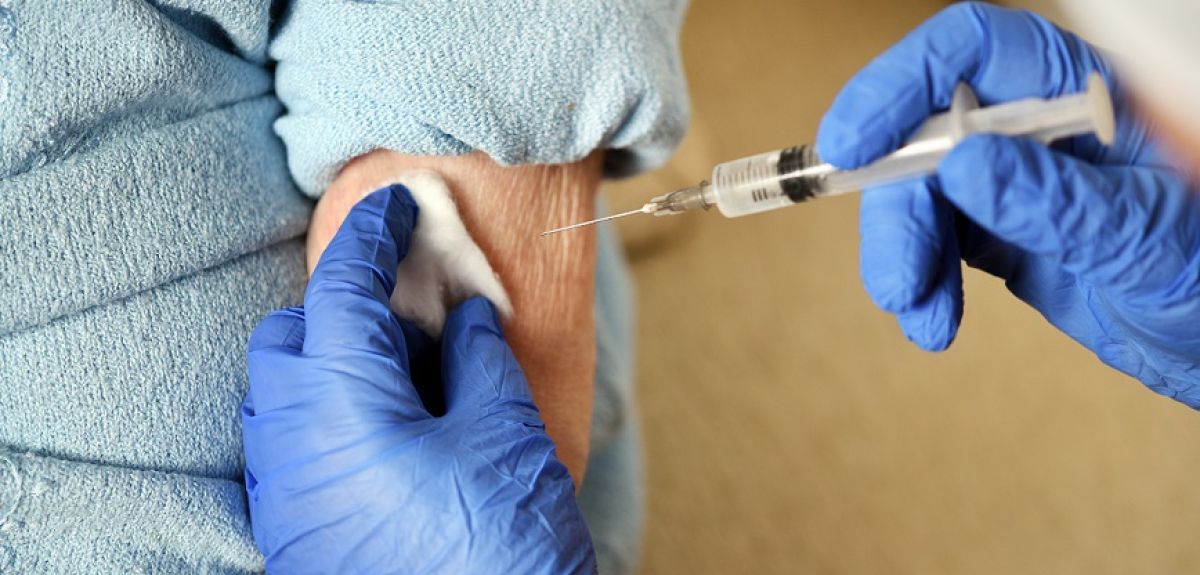
Credit: Shutterstock
Oxford researchers create online resource to optimise NHS routes for housebound vaccinations
Two engineering DPhil students from the University of Oxford have created a website for GP surgeries across the UK to optimise the delivery of Covid-19 vaccinations to the UK’s 1 million housebound patients.
VaxiMap is the direct response to a problem reported by GP practices of how to deliver huge numbers of Covid-19 vaccines to housebound patients on top of already busy workloads. The mapping software has saved time, money and energy of NHS services which are stretched across all three.
Since launching in January 2021, 220,000 patients have been reached, 20,000 routes calculated and the team estimates around £400,000 has been saved by the NHS in time efficiencies (9000 hours of work).
When Dr Robert Staruch, DPhil student at the Department of Engineering Science, spoke to a GP friend from Dowlais, Merthyr Tydfil, Wales, he realised the demands of meeting vaccine targets in a vulnerable housebound population was a massive extra task, and one which he could help to streamline.
This vaccine roll-out requires high levels of efficiency to reduce dose wastage, and maximise roll-out amongst the vulnerable. VaxiMap does this.
Dr Staruch says: ‘My friend was manually mapping his housebound patient locations in order to then plan routes for him to vaccinate them by car. I felt there was established platforms that could be utilised to streamline this into a much more efficient process. This vaccine roll-out requires high levels of efficiency to reduce dose wastage, and maximise roll-out amongst the vulnerable. VaxiMap does this.’
Teaming up with colleague, Thomas Kirk, a fellow DPhil student at the Department of Engineering Science, the enterprising pair analysed the problem and realised that they could help by creating software which plotted the optimal routes for home visits, factoring in precise dosing schedules and offering both walking and driving options for rural or urban settings.
Thomas Kirk got to work and stitched together different bits of tech, wrote the code and put the website up as a free resource, specially designed to work with GP practice data. The result was VaxiMap.
Healthcare professionals can upload Excel documents of anonymised patient postcodes and the website will sort the patients into the optimal order and map the routes.
Because we were speaking directly to GPs, we knew exactly what was needed, so my job was to build the simplest possible thing that ticked all their boxes.
Thomas Kirk says: ‘Because we were speaking directly to GPs, we knew exactly what was needed, so my job was to build the simplest possible thing that ticked all their boxes. The whole project - and the fact that we were able to get it online in 48 hours - is testament to the power of open-source software. All the tools we've used are freely available for anyone to access.’
Robert Staruch, a trainee Burns & Plastic surgeon in the Defence Medical Services, reached out to colleagues at jHubMed for support of the project. They supported with £7,500 towards costs and Military vaccine teams have adopted the software for their vaccine routes.
Oxford University Innovation (OUI) and Magdalen College also contributed to the project, while Microsoft came on board as technical partner via its Bing mapping services.
Dr Staruch says: ‘The platform doesn’t track any user or patient data so it’s entirely GDPR compliant, an obvious concern for NHS healthcare workers. Although a multitude of mapping systems exists, this integrates the nuances of vaccine delivery and patient numbers for route optimisation. I believe its success so far is its simplicity and ease of use.’
There are over 1 million housebound patients in the UK and this free software aims to continue its ongoing support for the Covid-19 vaccination programme. Feedback from users has already highlighted its necessity during the annual flu vaccine programme, as well in other services that are increasingly being delivered at home (such as IV drug therapies) as a result of the pandemic. There is therefore significant impact for this service for the NHS in a variety of ways.
Although a multitude of mapping systems exists, this integrates the nuances of vaccine delivery and patient numbers for route optimisation. I believe its success so far is its simplicity and ease of use.
One user commented: ‘VaxiMap saves at least an hour a day on planning time, and 2 hours per day on nurse travel time. Over our 230 housebound patients I would estimate savings of 4 hours of planning time and 20 hours of nurse travel time.’
Another commented: ‘I would have been sitting with a map, AtoZ and doing it all manually (and getting very frustrated). It’s also very easy to reorganise the list if a patient is unwell etc and cannot have the vaccine at the last minute.’
The developers, Thomas Kirk and Robert Staruch, based at the University of Oxford Department of Engineering Science, hope that VaxiMap will continue to contribute the UK’s vaccine roll out while also providing an-going tool for the NHS in the future.
Visit Vaximap here: https://vaximap.org/
 Expert Comment: The illegality of the US attack against Venezuela is beyond debate - how the world reacts is critical
Expert Comment: The illegality of the US attack against Venezuela is beyond debate - how the world reacts is critical
 Honorary degree recipients for the Chancellor’s ceremony announced
Honorary degree recipients for the Chancellor’s ceremony announced
 Expert Comment: What US action in Venezuela could unleash — regionally and globally
Expert Comment: What US action in Venezuela could unleash — regionally and globally
 Expert Comment: Why cherish the analogue in a digital age?
Expert Comment: Why cherish the analogue in a digital age?